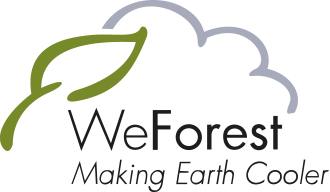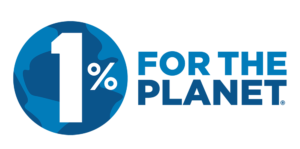
Our collaboration with Brazilian NGO Instituto de Pesquisas Ecológicas (IPÊ) carries out forest restoration in the Pontal do Paranapanema region, reconnecting forest fragments through the restoration of wildlife corridors.
The project is on track, with the restoration of 138 ha, representing around 282 700 trees, concluding in February 2023. Another 38.5 ha area under restoration in Categeró Farm in the East Corridor had been restored by the end of the latest planting season, which ran from August to September 2023.
2023 was the final year of data collection in our research project with Rainforest Connection (RFCx). The results so far are exciting, demonstrating high species richness in our restoration sites!
Another major focus this year was capacity building, with WeForest playing a large role in knowledge exchange and dissemination, aiming to improve technical capacity and project quality. A cross-project field workshop between the Pontal project and our other Atlantic Forest project in Tietê, both part of our Wildlife Corridors Programme, toured the restoration sites and looked at similarities and differences between the project, sharing tips and best practices.
*Final count pending
The 2022-2023 planting season was completed by February 2023, with 138 ha completed in Estrela farm in the North Corridor. When we visited in early 2024, the seedlings were coming up nicely. Maintenance was ongoing to control the exotic grasses, so that the seedlings don’t have to compete for resources when they’re so young. Slide the handle to see how this area looked in August 2023, a few months after planting, and how it looks now.


The restoration areas for the 2023-2024 planting season were defined towards the beginning of 2023. 38.5 hectares of full tree planting at Categeró Farm in the East Corridor, to continue to stretch this area towards the Morro do Diabo State Park, was already completed by September 2023!
Our visit to the restoration sites in early 2024 was a chance to see some tremendous progress with our own eyes. Our sites are now large, continuous areas of growth, with low “edge effect” – the changes in biodiversity and microclimate that occur inside the space surrounding the edge of a fragment. Any gaps caused by mortality are not a problem, since they are dotted across large areas and have little effect on the natural regeneration and succession in the restored areas.
In some of the sites we saw exotic species that have the potential to become invasive, such as Clitoria fairchildiana from the Amazon biome and Cordia africana from Africa. We’ll have to keep an eye on that, as too many invasive and short-lived species can stop native trees from regenerating.
The visit was also a chance to review techniques, maintenance and monitoring. As planting happens outside of the rainy season sometimes, IPÊ are using two types of hydrogels: one applied to the seedlings in the nursery, and one applied in the field during planting. If necessary, they do some “rescue irrigation” during the first days after planting to help the seedlings along. In addition, they harrow before planting when possible, which improves grass control in the beginning of the restoration.
More sustainable seedling production
The community nurseries supported by our project here are paving the way in the sustainable production of native seedlings. The traditional plastic tubes are being replaced by biodegradable paper tubes that don’t harm the environment, known as ‘ecopots’.
As well as the environmental benefits, the pots are kinder to the seedlings. “The roots are able to pass through the biodegradable tube due to the porosity of the paper,” Nivaldo Ribeiro Campos, coordinator of the community nurseries, says. “The new pots keep the roots closer to their natural state and help the development of the seedlings in the field.” In addition, the seedlings are transported to the field without the need to remove the container, as is the case with traditional tubes. This reduces waste, labour and, consequently, costs.
In 2023 IPÊ provided each nursery with an average of 40 production trays and 5000 ecopots to start the transition process. Iraci Lopes Corado, owner of the Viva Verde nursery, found that the Jatobá seed (Hymenaea courbaril) is one of the species that develop very well in the ecopots, and the production of different species of ipês (Handroanthus or Tabebuia spp.) has improved a lot. The rooting of this species made it difficult to remove the seedling from plastic containers, which led to a lot of split or broken pots to discard, or even the death of seedlings sometimes. “With the ecopot, this problem no longer exists because the seedling and pot goes straight into the ground,” she says. She likes them so much that she’s invested her own funds in 460 more trays!
Marcela’s ambition knows no bounds!
We visited Marcela’s nursery again in early 2024. She’s nearly doubled her production capacity from 2023: her nursery is able to produce 700,000 seedlings per year! Some of these seedlings will play a part in IPÊ and partners’ continuing work in the area under the Corridors for Life project.
The third year of acoustic data collection to monitor biodiversity in our Pontal project was completed by the end of 2023. While the final results and analysis will be ready later in 2024, Rainforest Connection (RFCx) have so far identified a total of 187 species across 132 sampling sites in two consecutive years – 174 birds, 9 amphibians, two insects and two monkeys: the endangered black lion tamarin and the black capuchin.
The bare-throated bellbird (Procnias nudicollis), detected in WeForest’s restoration sites in 2022 and listed as Near Threatened on the IUCN Red List.
© Bcmyrtlau
Most excitingly, the average species richness in our restoration sites (24 species) was nearly equal to that of mature forest sites (25 species)! In contrast, agricultural sites had an average of just 15 species.
To listen to the species detected in our Pontal sites, go to the Arbimon Insights platform at https://arbimon.org/p/weforest-wildlife-corridors/insights (go to the “Spotlight” tab and select a species from the scroll list).
Our project here is linking forest fragments to the second largest Protected Area in the Interior Atlantic Forest – the Morro do Diabo State Park – and that’s where the largest animals are to be found. Our camera traps within the park have spotted anteaters, pumas and even jaguars this year!
In June 2023 a field workshop brought together the teams and stakeholders from Pontal and our nearby Tietê Forests project, which we’re running with partner AES Brasil. The aim was to exchange experiences and good practices, and both sides presented their project highlights. The Tietê team was impressed with the size of the restoration sites in Pontal, while the Pontal team was impressed with the complexity of the implementation and maintenance in the Tietê project.
June’s workshop was also a great chance to compare and contrast our two Atlantic Forests projects: they may be just 300 miles apart, but they’re very different! The main similarity is that many of the same species are planted in both projects since they’re located within the same biome. The table below contrasts some of the other aspects of the two projects.
Pontal | Tietê |
|---|---|
Large continuous areas being restored | Small, spread out sites being restored along water courses |
Large forest fragments of forest in the landscape | Highly fragmented and small-sized forest fragments in the landscape |
Long-term presence (IPÊ in Pontal for over 30 years) | Ceiba and AES are private companies with limited time in the region |
Semi-mechanized planting using “matracas” | Mechanized land preparation, manual planting due to size of seedlings |
Hydrogel for irrigation and planting | Hydrogel planting |
No planting fertilization | Planting fertilization |
Planting throughout the year, with support from irrigation | Planting only during the rainy season |
No use of green manure | Use of green manure |
Spacing 2.5 x 2 m | Different planting designs aiming to optimize vegetation development and maintenance activities, resulting in a reduced herbicide approach |
No fertilization post-planting | Fertilization post-planting (once a year for 2 years) |
Community nurseries (on average 400,000 seedlings per nursery per year) | One nursery with complex infrastructure and over 1 million seedlings/year |
Difficult to standardize seedling quality | More technical and standardized production
|
Nursery best practices based on continuous development
| Nursery best practices based on scientific evidence
|
With knowledge exchange workshops like this, WeForest is working towards a much broader goal: to improve technical capacity and project quality to benefit all our restoration activities across the world.
Our planned ten-year collaboration IPÊ is now in its 10th year!
In the 2024-2025 planting season which will begin in August, 8 ha will be planted to bring the project to its overall target of 1313 ha.
The most important activity this year will be to run a thorough evaluation of the project and to start to monitor our sites now and in the future. IPÊ has put together two field teams to work exclusively on the maintenance of all the sites, including grass control and any replanting that is needed.
The nurseries are increasing the size of the paper pots to improve seedlings development even further.
Every hectare under restoration is mapped with GPS points to generate polygons (areas on a map) that are assigned to sponsors. Permanent monitoring plots are established in our sites and our forestry and science teams conduct surveys to monitor progress of biomass growth, tree density, survival rate and species diversity, among other indicators. Where social impacts are also critical, we measure socio-economic indicators such as the number of individuals or families directly benefiting, people trained, and income generated from forest-friendly livelihood activities.
Please visit our What We Do web page for more information.
Thank you for supporting the Pontal project!
HQ (BE): WeForest asbl/vzw
Cantersteen 47, 1000 Brussels, Belgium
VAT number BE0826.151.968
Incorporated May 26th 2010
WeForest is a supporting member of:





| Cookie | Duration | Description |
|---|---|---|
| __cf_bm | 1 hour | This cookie, set by Cloudflare, is used to support Cloudflare Bot Management. |
| _GRECAPTCHA | 6 months | Google Recaptcha service sets this cookie to identify bots to protect the website against malicious spam attacks. |
| cookielawinfo-checbox-analytics | 11 months | This cookie is set by GDPR Cookie Consent plugin. The cookie is used to store the user consent for the cookies in the category "Analytics". |
| cookielawinfo-checbox-functional | 11 months | The cookie is set by GDPR cookie consent to record the user consent for the cookies in the category "Functional". |
| cookielawinfo-checbox-others | 11 months | This cookie is set by GDPR Cookie Consent plugin. The cookie is used to store the user consent for the cookies in the category "Other. |
| cookielawinfo-checkbox-advertisement | 1 year | Set by the GDPR Cookie Consent plugin, this cookie records the user consent for the cookies in the "Advertisement" category. |
| cookielawinfo-checkbox-necessary | 11 months | This cookie is set by GDPR Cookie Consent plugin. The cookies is used to store the user consent for the cookies in the category "Necessary". |
| cookielawinfo-checkbox-performance | 11 months | This cookie is set by GDPR Cookie Consent plugin. The cookie is used to store the user consent for the cookies in the category "Performance". |
| CookieLawInfoConsent | 1 year | CookieYes sets this cookie to record the default button state of the corresponding category and the status of CCPA. It works only in coordination with the primary cookie. |
| elementor | never | The website's WordPress theme uses this cookie. It allows the website owner to implement or change the website's content in real-time. |
| JSESSIONID | session | New Relic uses this cookie to store a session identifier so that New Relic can monitor session counts for an application. |
| Path | session | Description is currently not available. |
| viewed_cookie_policy | 11 months | The cookie is set by the GDPR Cookie Consent plugin and is used to store whether or not user has consented to the use of cookies. It does not store any personal data. |
| Cookie | Duration | Description |
|---|---|---|
| _hjAbsoluteSessionInProgress | 1 hour | Hotjar sets this cookie to detect a user's first pageview session, which is a True/False flag set by the cookie. |
| _hjIncludedInSessionSample_2773626 | 1 hour | Description is currently not available. |
| aka_debug | session | Vimeo sets this cookie which is essential for the website to play video functionality. |
| authstrategy | session | Description is currently not available. |
| li_gc | 6 months | Linkedin set this cookie for storing visitor's consent regarding using cookies for non-essential purposes. |
| lidc | 1 day | LinkedIn sets the lidc cookie to facilitate data center selection. |
| pll_language | 1 year | Polylang sets this cookie to remember the language the user selects when returning to the website and get the language information when unavailable in another way. |
| UserMatchHistory | 1 month | LinkedIn sets this cookie for LinkedIn Ads ID syncing. |
| Cookie | Duration | Description |
|---|---|---|
| SRM_B | 1 year 24 days | Used by Microsoft Advertising as a unique ID for visitors. |
| Cookie | Duration | Description |
|---|---|---|
| _ga | 1 year 1 month 4 days | Google Analytics sets this cookie to calculate visitor, session and campaign data and track site usage for the site's analytics report. The cookie stores information anonymously and assigns a randomly generated number to recognise unique visitors. |
| _ga_* | 1 year 1 month 4 days | Google Analytics sets this cookie to store and count page views. |
| _gcl_au | 3 months | Google Tag Manager sets the cookie to experiment advertisement efficiency of websites using their services. |
| _hjFirstSeen | 1 hour | Hotjar sets this cookie to identify a new user’s first session. It stores the true/false value, indicating whether it was the first time Hotjar saw this user. |
| _hjSession_* | 1 hour | Hotjar sets this cookie to ensure data from subsequent visits to the same site is attributed to the same user ID, which persists in the Hotjar User ID, which is unique to that site. |
| _hjSessionUser_* | 1 year | Hotjar sets this cookie to ensure data from subsequent visits to the same site is attributed to the same user ID, which persists in the Hotjar User ID, which is unique to that site. |
| ajs_anonymous_id | 1 year | This cookie is set by Segment to count the number of people who visit a certain site by tracking if they have visited before. |
| ajs_group_id | 1 year | This cookie is set by Segment to track visitor usage and events within the website. |
| ajs_user_id | 1 year | This cookie is set by Segment to help track visitor usage, events, target marketing, and also measure application performance and stability. |
| AnalyticsSyncHistory | 1 month | Linkedin set this cookie to store information about the time a sync took place with the lms_analytics cookie. |
| CLID | 1 year | Microsoft Clarity set this cookie to store information about how visitors interact with the website. The cookie helps to provide an analysis report. The data collection includes the number of visitors, where they visit the website, and the pages visited. |
| CONSENT | 2 years | YouTube sets this cookie via embedded YouTube videos and registers anonymous statistical data. |
| MR | 7 days | This cookie, set by Bing, is used to collect user information for analytics purposes. |
| s_vi | 2 years | An Adobe Analytics cookie that uses a unique visitor ID time/date stamp to identify a unique vistor to the website. |
| SM | session | Microsoft Clarity cookie set this cookie for synchronizing the MUID across Microsoft domains. |
| VISITOR_PRIVACY_METADATA | 6 months | Description is currently not available. |
| vuid | 1 year 1 month 4 days | Vimeo installs this cookie to collect tracking information by setting a unique ID to embed videos on the website. |
| Cookie | Duration | Description |
|---|---|---|
| ANONCHK | 10 minutes | The ANONCHK cookie, set by Bing, is used to store a user's session ID and verify ads' clicks on the Bing search engine. The cookie helps in reporting and personalization as well. |
| bcookie | 1 year | LinkedIn sets this cookie from LinkedIn share buttons and ad tags to recognize browser IDs. |
| bscookie | 1 year | LinkedIn sets this cookie to store performed actions on the website. |
| IDE | 1 year 24 days 1 minute | Google DoubleClick IDE cookies store information about how the user uses the website to present them with relevant ads according to the user profile. |
| li_sugr | 3 months | LinkedIn sets this cookie to collect user behaviour data to optimise the website and make advertisements on the website more relevant. |
| muc_ads | 1 year 1 month 4 days | Twitter sets this cookie to collect user behaviour and interaction data to optimize the website. |
| MUID | 1 year 24 days | Bing sets this cookie to recognise unique web browsers visiting Microsoft sites. This cookie is used for advertising, site analytics, and other operations. |
| personalization_id | 1 year 1 month 4 days | Twitter sets this cookie to integrate and share features for social media and also store information about how the user uses the website, for tracking and targeting. |
| test_cookie | 15 minutes | doubleclick.net sets this cookie to determine if the user's browser supports cookies. |
| VISITOR_INFO1_LIVE | 6 months | YouTube sets this cookie to measure bandwidth, determining whether the user gets the new or old player interface. |
| YSC | session | Youtube sets this cookie to track the views of embedded videos on Youtube pages. |
| yt-remote-connected-devices | never | YouTube sets this cookie to store the user's video preferences using embedded YouTube videos. |
| yt-remote-device-id | never | YouTube sets this cookie to store the user's video preferences using embedded YouTube videos. |
| yt.innertube::nextId | never | YouTube sets this cookie to register a unique ID to store data on what videos from YouTube the user has seen. |
| yt.innertube::requests | never | YouTube sets this cookie to register a unique ID to store data on what videos from YouTube the user has seen. |
| Cookie | Duration | Description |
|---|---|---|
| __tld__ | session | Description is currently not available. |
| ajscookies | 1 year | No description available. |
| ajstest | 1 year | No description available. |
| debug | never | No description available. |